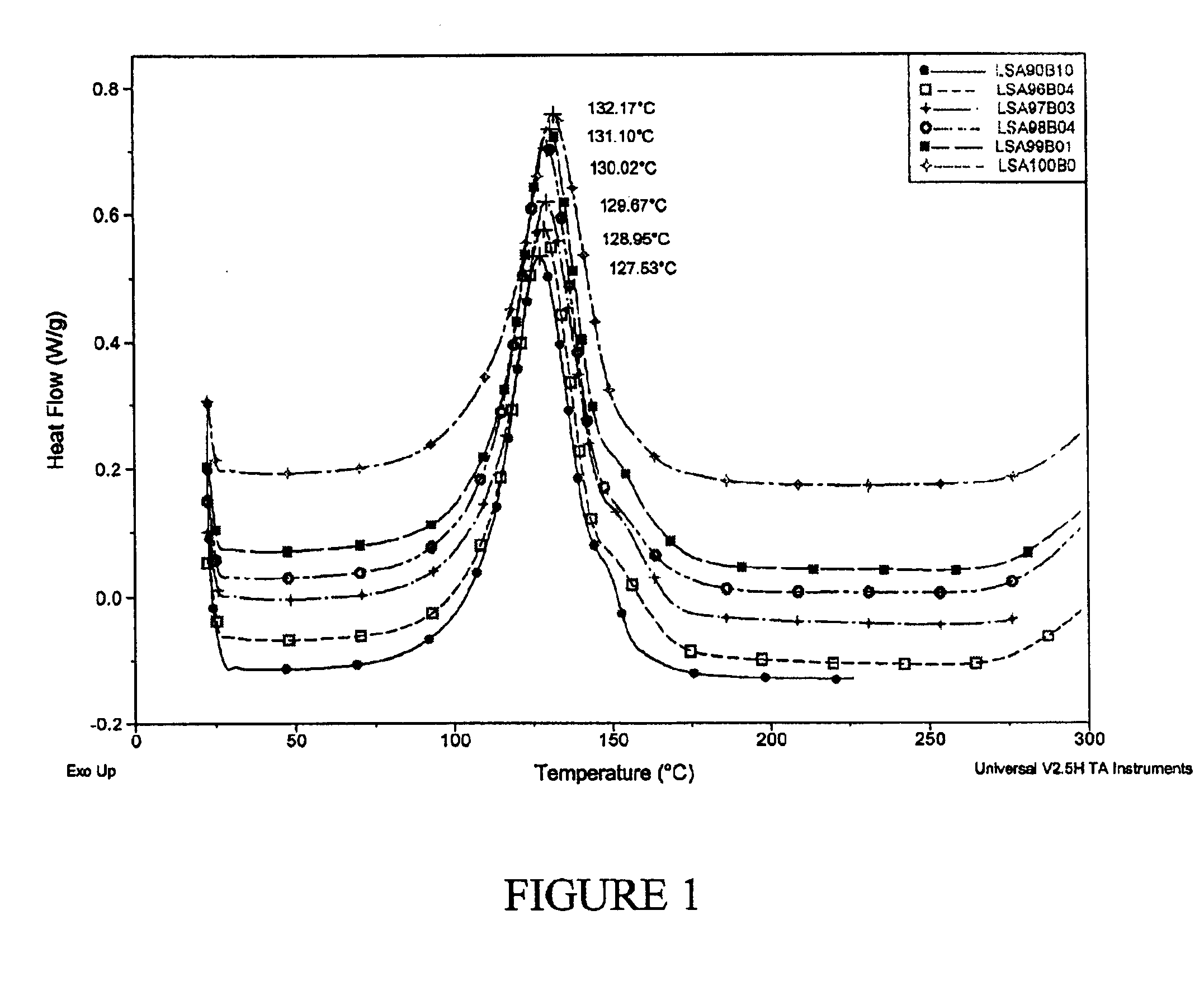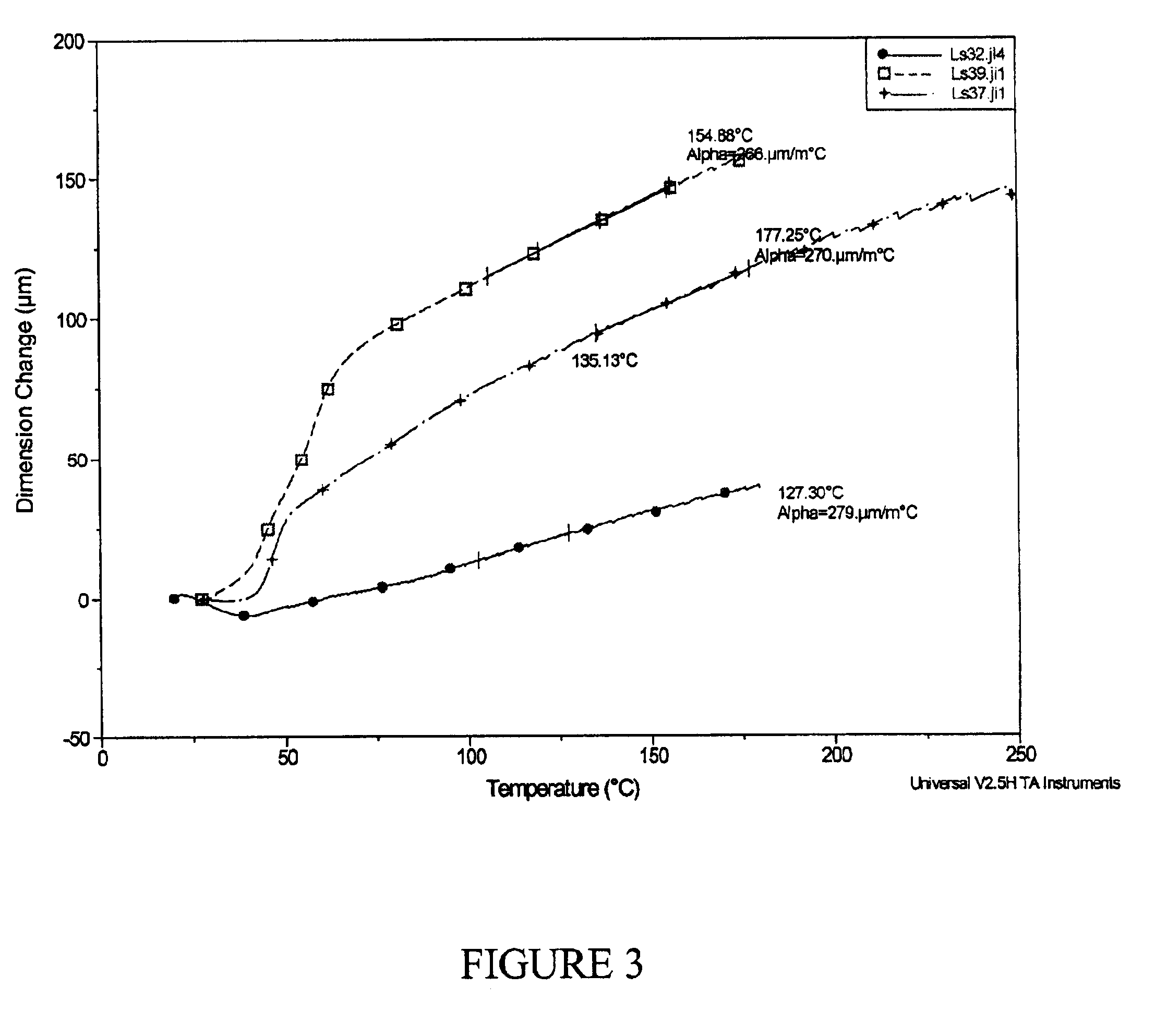Low stress conformal coatings of reliability without hermeticity for microelectromechanical system based multichip module encapsulation
a technology of microelectromechanical system and conformal coating, applied in the field of polymer, can solve the problems of stress sensitive mems based devices, fragile microelectronic devices, and complex packaging of mems based multi-chip modules, and achieve low glass transition temperature (tg), low storage modulus, and low stress conformal
- Summary
- Abstract
- Description
- Claims
- Application Information
AI Technical Summary
Benefits of technology
Problems solved by technology
Method used
Image
Examples
example 1
[0047]The elastomer modified epoxy can comprise an epoxy base resin reacted with a modifier. Suitable elastomer modified epoxies comprise a CTBN modified bishpenol A epoxy. Suitable base resins include any known epoxy, preferably EPON™ resins. Suitable modifiers include but are not limited to flexibilizers, glycidyl ethers, monofunctional glycidyl ethers, and polyfunctional glycidyl ethers, preferably HELOXY™ modifiers. It will be appreciated that modifiers can also serve as diluents. For example, HELOXY™ Modifier 68 is a diglycidyl ether of neopentyl glycol and is primarily used as a reactive diluent or viscosity reducing modifier for all classes of epoxy resins. EPON™ Resin 58034 is an elastomer modified epoxy functional adduct formed from the reaction of HELOXY™ 68 Modifier and a carboxyl terminated butadiene-acrylonitrile elastomer. The liquid epoxy adducted contains 40% Hycar 1300×13 CTBN rubber. Elastomer content is approximately 50 percent by weight. HELOXY™ Modifier 48 is a ...
example 2
[0068]Three different coordinate-solvent-dissolved platinum catalysts were evaluated to polymerize exemplary low stress curable silicone compositions for preparing a conformal coating at room temperature. It was found that hydrosilylation can be initiated at much lower temperatures, even at room temperature with comparative curing time. The three catalysts are 1) Platinum divinyl tetramethyl siloxane, in a xylene solution; 2) Platinum divinyltetramethyl siloxane, in a linear vinylsilicone; 3) Platinum divinyltetramethyl siloxane, in a vinyl cyclic carrier. Because the platinum complex dissolved in different degrees of inhibitors, their ability of acceleration is different. The catalysts can be about 5 to about 150 ppm, preferably about 15 to about 85 ppm, most preferably about 20 to about 35 ppm. The curing procedure was improved from original 150° C. 2 hrs to room temperature with different cure times depending on the catalyst being used as shown in Table 2.
[0069]
TABLE 2Concentrati...
PUM
| Property | Measurement | Unit |
|---|---|---|
| temperature | aaaaa | aaaaa |
| Tg | aaaaa | aaaaa |
| Tg | aaaaa | aaaaa |
Abstract
Description
Claims
Application Information
 Login to View More
Login to View More - R&D
- Intellectual Property
- Life Sciences
- Materials
- Tech Scout
- Unparalleled Data Quality
- Higher Quality Content
- 60% Fewer Hallucinations
Browse by: Latest US Patents, China's latest patents, Technical Efficacy Thesaurus, Application Domain, Technology Topic, Popular Technical Reports.
© 2025 PatSnap. All rights reserved.Legal|Privacy policy|Modern Slavery Act Transparency Statement|Sitemap|About US| Contact US: help@patsnap.com



